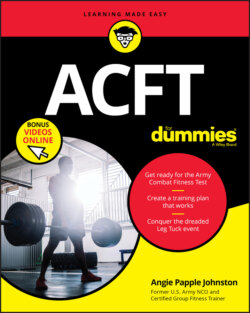Читать книгу ACFT For Dummies - Angela Papple Johnston - Страница 12
Saying Goodbye to the Old APFT
ОглавлениеFitness training has been on the Army’s radar for years — but not from the very beginning. Seven decades after General Friedrich Von Steuben’s Blue Book laid out the drill and ceremony the Army uses today, West Point implemented the first physical fitness program for its cadets. The program included gymnastics, calisthenics, swimming, and fencing. Six years later, cadets were assessed for their performance on a 15-foot wall climb, a 5-foot horse vault, a 10-foot ditch leap, an 8-minute mile run (or an 18-minute two-mile run), a 4.5-mile walk that a cadet had to complete in an hour, and a 3-mile ruck with 20 pounds of gear, arms, and equipment in under an hour.
The Army scrapped the whole physical training (PT) program in 1861 when the Civil War started, but in 1885, the Army hired a new Master of the Sword, Lt. Col. Herman John Koehler. Koehler’s Manual of Calisthenic Exercises became the first Army-wide physical training manual. In 1920, the Army re-implemented its testing requirement. Soldiers had to successfully perform a 14-second 100-yard sprint, an 8-foot wall climb, a 12-foot running jump, and a 30-yard grenade throw as well as complete an obstacle course.
The test continued to evolve with the publication of Field Manual 21-20 in 1941. It’s the same FM in use today, but the events (and the test’s name) changed every few years until 1980, when the APFT you know and love became the standard.
Now that the creators of the last evolution have retired, the APFT has gone into retirement, too. (No word yet on whether it’s buying a red sports car, though.) Its replacement: the ACFT. Like many past evolutions of Army physical fitness testing, the ACFT includes multiple events designed to represent how well you can perform on the battlefield.
